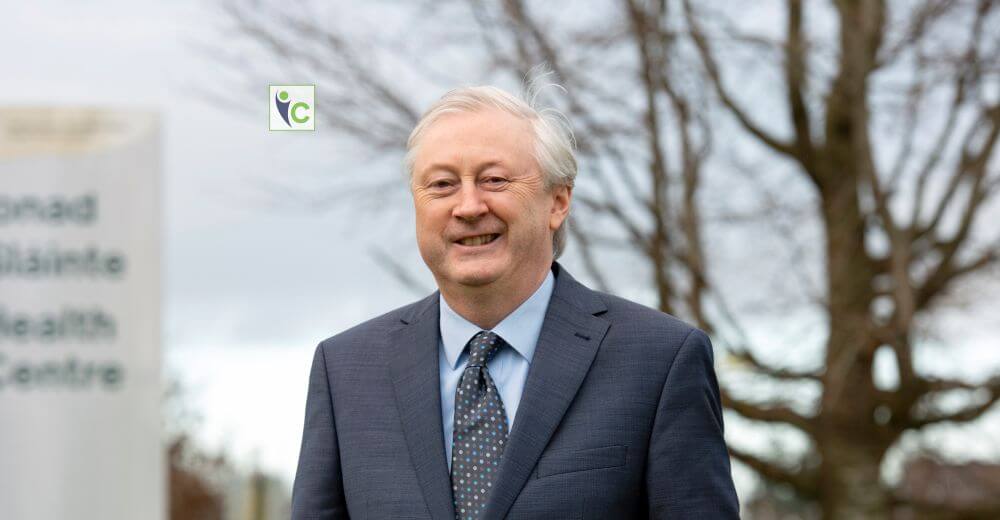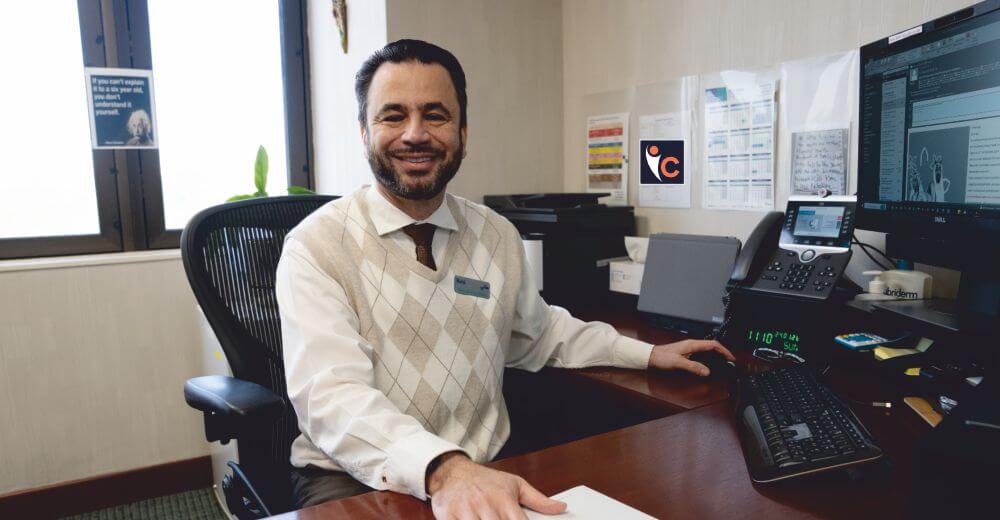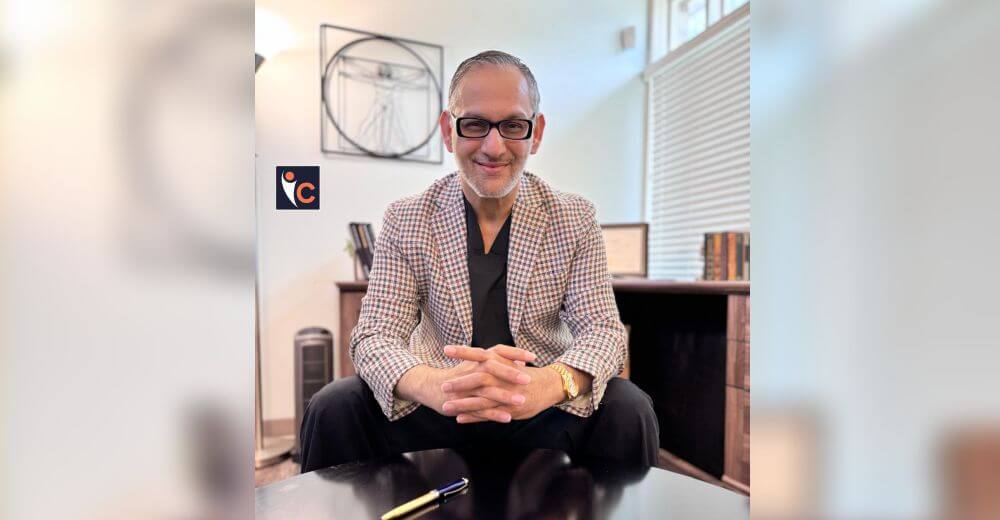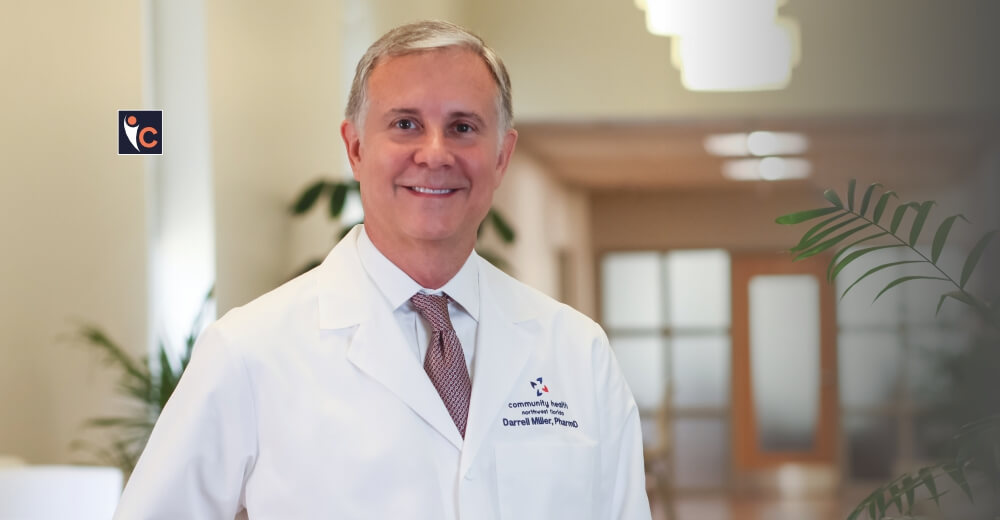Professor Martin Curley is a health tech executive, a father, an engineer and an acknowledged leading innovator. Curley selected the challenge of trying to transform healthcare using digital technology and data by the innovation paradigm he created and termed as ‘Open Innovation 2.0.’
Professor Curley has had a diverse global career in industry and academia, which has spanned the globe. He has lectured and spoken at many global universities and conferences and been in boardrooms worldwide. As an engineer and industry executive, he has worked in the Netherlands and multiple locations in the USA and spent time at MIT as a visiting scholar.
No stranger to political institutions such as the UN, European Parliament, 10 Downing Street, and the White House, Curley has published eight books and many papers on digital, IT, innovation, and entrepreneurship. Curley has applied digital technologies to many sectors including smart cities, education, manufacturing, and the energy sector. He is the Director of Digital Transformation and Open Innovation at Ireland’s Health Service Executive (HSE). He is also a Professor of Innovation at Maynooth University, leading research into digital health capability maturity frameworks with clinicians and executives from companies such as Medtronic, Roche, Huawei, and Cisco.
Embracing Preeminent Developments Ireland has made rapid digital progress since the Stay Left, Shift Left Strategy has been implemented by Curley and his team. According to the OECD Ireland is now fourth in Europe for Teleconsultations compared to the bottom just several years before. Ireland was one of the first countries in the world to introduce remote COVID 19 monitoring and have now extended the same technology to a remote virtual respiratory ward with over 800 patients.
Irish hospitals have leapt ahead and are now likely to be the first hospital system in the world to have real-time mobile tolerant respiratory monitoring as the standard of care in respiratory wards.
Ireland is deploying a leading-edge Vital Signs Automation system to twenty hospitals and in parallel is planning a technology transfer of the solution to one of the world’s largest hospital groups. Ireland is now classified as a fast follower in Europe in the area of Digital Therapeutics regulation.
With over 50 digital living labs in place across the country, Ireland is fast becoming a leader in Digital Health Innovation and on track to be a European Digital Health Leader by 2025.
Curley’s Law for Healthcare
As an Intel Vice President, Curley had the opportunity to see and shape how digital technology was dramatically transforming industries and observed that the healthcare industry, despite being so information-intensive, was a real laggard in digitalizing. He was very motivated by Intel’s vision (CEO Paul Otellini) of creating and extending computing technology to connect and enrich the lives of everyone on the planet.
Curley says, “I was motivated by the challenge to transform Ireland’s Healthcare system. As chair of the EU open innovation and strategy and policy group and VP for Intel Labs Europe, I researched and shaped digital innovation practice. I wrote a book called ‘Open Innovation 2.0 (OI2)’ with a colleague Bror Salmelin from the European Commission about how digital technology could be used to structurally transform an industry.”
Thus, when the chance came, Curley joined the HSE as Chief Information Officer with a vision and goal of digitally transforming the Irish health service.
“I quickly realized that I could not do this as the CIO, and following discussion with the HSE CEO, I was able to transition to and create a new function called Digital Transformation. The upside was that this gave me a blank canvas to drive a digital transformation, but the downside was there was no money or resources associated with the new role. Thus, I had to bootstrap, grow the function myself and build a coalition of supporters and resources who shared the same vision.”
Curley’s law, the combination of exponential technologies, network effects, the information-intensive nature of healthcare and the exponential innovation methodology ‘Open Innovation 2.0’ are leading to a Cambrian explosion of new digital health solutions which will become the dominant driver of health improvement for the next decades.
Lives will be extended, health will be preserved and improved at rates never seen before. A key characteristic of OI2 collaboration in a healthcare setting will be the delivery of 10X benefits (cheaper, faster, better etc) through the use of exponential technologies and an exponential mindset.
And these digital innovations are likely to show
supranormal returns.
After two extraordinarily difficult years but finding many like-minded clinicians and external leaders who shared the same vision, the HSE Digital Transformation team have been able to create momentum and the first of a range of solutions that are radically transforming healthcare in Ireland.
Curly adds, “I am lucky that I have highly motivated and expert team members such as Jim McGrane, Des O’Toole, Monica Ahumada, Michael Scott, and colleagues across the network such as Michael Sugrue, Ross Cullen, Richard Costello, John Shaw. Lorraine Smyth, Mike O’Connor, and many others who share the same vision.”
Niccolò Machiavelli said, “It ought to be remembered that there is nothing more difficult to take in hand, more perilous to conduct, or more uncertain in its success than to take the lead in the introduction of a new order of things.”
This they found to be the case, but Curley now believes that a new order of things is arriving. The spontaneous formation of an Ireland Digital Health Leadership Steering group with leaders from across the spectrum in Ireland shows, as Victor Hugo’s says, ‘There is nothing as powerful as an idea whose time has come’.
Curley also opines, “Danger still lurks, but I am always guided by Intel CEO and Time Man of the year Andy Grove’s quote ‘Only the Paranoid Survive’. It is too early to let down our guard.”
Together with other leaders across the spectrum of Healthcare in Ireland such as Dr John Sheehan, John Shaw, Gary Boyle, Eileen Byrne, Jim Joyce, Eamonn Costello and over fifty others, Martin convened and created the Irish Digital Health Leadership Steering Group (IDHLSG) as a professional, patient and citizen leadership group to oversee and accelerate the implementation of Stay Left, Shift Left in Ireland.
This is an example of what Harvard Business Review has just dubbed a ‘high impact coalition’ working to drive massive structural change by aligning assets, joining dots, removing roadblocks and promote and accelerate the results, narrative and momentum. Curley has extended Michael Porter and Elizabeth Teisberg’s concept of Value Based Competition to Value Based Coopetition. The IDHLSG are all leaders who equally value people, purpose and profit and understand the emerging economy of Mutuality.
Transforming the Healthcare
The HSE is Ireland’s national health service provider with 130k direct, and indirect employees providing all of Ireland’s public health services in hospitals and communities across the country. The HSE’s vision is a healthier Ireland with a high-quality health service valued by all.
The HSE’s mission is that people in Ireland are supported by health and social care services to achieve their full potential and that they can receive the right care in the right place at the right time. With a budget of 20 billion euros annually, it is by far the largest employer in the country. HSE implements a cross-government and party policy called ‘Slaintecare,’ a ten-year program to reform the health and social care system and provides a roadmap for building a world-class health and social care service for the Irish people.
Led by CEO Paul Reid, who led from the front in COVID, the HSE pivoted nationally to respond to the pandemic. Its reputation has significantly improved with its response to the COVID. Anchored by the steady hand of Robert Watt, Secretary General of the Department of Health and an Engineering trained Minister for Health, Stephen Donnelly, Ireland now has had one of the highest vaccination rates in the world.
In their seminal book Value Based Healthcare, Michael Porter and Elizabeth Teisberg describe that healthcare systems are full of 21st-century clinicians and equipment but are run with Victorian-style systems and management approaches, and the HSE is no different.
The HSE has been particularly weak in IT systems and management. In recent survey’s Ireland was fourth last in the OECD countries for electronic healthcare record maturity, last together with Romania and Serbia amongst European countries for telehealth maturity. Its citizens were second lowest in Europe for using the internet to look for health information.
The HSE has suffered years of under-investment and resourcing in its IT and digital systems. Despite many passionate clinicians, Ireland has the highest acute bed occupancy in Europe at an average of around 96% compared to countries such as Greece, which averages around 50%.
“To align with the national health policy and program, I recognised that digital technologies could be the force multiplier that could drive a radical transformation of the health system. Incremental innovation was no longer enough. And that’s where the journey started,” Curley informs.
In his first major conference in Dublin as the new CIO of HSE (equivalent to the UK’s NHS) in May 2018, Curley introduced the concept of ‘Stay Left, Shift Left’ (SL2) and had worked in advance with about ten Irish digital health SME’s, who were able to align their products/service with this new strategy. Stay Left is about using technologies to keep well people well in their homes or if you happen to have a chronic condition or need rehabilitation that this can be accomplished best of all from home. Shift Left is about using technologies to move patients from an acute to a community to a home setting as quickly as possible.
Recognising that awareness is the first step in any transformation Curley formed the HSE Digital Academy with the support of the HSE Chief Operations Officer Anne O’Connor and Chief Clinical Officer Dr Colm Henry. Immediately Curley mobilised all eight Irish universities to work together to co-create and co-deliver a new master’s in digital health Transformation which has and is yielding a powerful of cohort of clinician digital leaders who are a core part of the digital change movement. Key academics such as Annette McElligott (UL), Prof Anthony Staines (DCU), Dr Pam Hussey (DCU) and Dr Ciara Heavin (UCC) were especially helpful and influential in getting this unique collaboration off the ground. In 2023, it is planned to extend this Masters to all of Ireland with the collaboration of Queens University (Prof Mark Lawler) and Ulster University (Prof. Jim McLaughlin) with HSC (Dan West, CIO) in Northern Ireland also enrolling clinicians in the program.
In the first year 45 clinicians graduated delivering twenty digital change projects some of which have had national impact including accelerating the recovery time from a recent crisis cyberattack (Niall Ginnity) and a Vital Signs Automation project. Leading companies such as Microsoft, Cisco, Salesforce contributed to digital literacy offering in the HSE Digital Academy and a joint industry diploma with Dell on Digital Health Futures has over 1500 clinicians registered and taking the course. The graduates from this diploma will form an army of digital health catalysts which will help drive rapid progress and form a movement across the health system.
It is absolutely critical that healthcare systems and service companies adopt new technologies. With faster growths of demand and cost compared to GDP growth, healthcare systems are on an unsustainable path. The key opportunity to reverse this trend is to use exponential technology to deliver more and better for less.
Sl2 advocates for four types of benefits, sometimes called the expanded quadruple aim –
- Better care and outcomes
- Lower cost or better value
- Better patient and clinician experience
- Better patient and clinician quality of life
Curley is very hopeful of this novelty, “Because of their nature, we are finding that as we deploy digital
technologies, we can sometimes achieve an order of 10X magnitude improvement in one or more of these variables.”
But even further, when an exponential mindset embraces exponential technologies, the healthcare organisation becomes exponential. Peter Diamandis says once something is digitized, it adopts the same properties as an exponential technology – this is also true for an organisation. Healthcare systems are based on information, and now digital information can be created, shared, analysed, and distributed at the speed of the internet. And it is more sustainable as once a patient’s information is digitized, you can start to move knowledge, not patients.
“I cannot think of anything more critical for a health services organisation or system than to have an overarching digital vision and strategy which is aligned with the overall mission and vision of the organisation. In Ireland we have firmly aligned our digital strategy ‘Stay Left, Shift Left – 10X’ with the Government Healthcare reform policy and Slaintecare,” Curley says.
Curley’s vision is to create an ‘Accountable Care Ecosystem in Ireland’ where clinicians, hospitals, healthcare providers work as a networked team to deliver the optimum coordinated care at highest value and lowest cost. Today the business model of many healthcare systems are designed so that too many people get paid more to the do the wrong thing. Leading clinical network organizations in Ireland such as Centric Health and Navi/Careplus are key participants in helping co-create the vision. Network Centric Healthcare, sometimes call Healthcare 4.0 will be key to provision of a better, more resilient and sustainable healthcare system where the entire ecosystem works mostly in harmony to optimize care, efficiency, effectiveness and experience.
As a Professor of Innovation in Maynooth University, Curley is leading an industry research team to create a digital health and wellness capability maturity framework (DHW-CMF|) which can guide the transformation and measure progress along the way. Supported by key companies such as Cisco, Medtronic, Roche, Huawei and Legato Health, executives from these companies such as Brian Jordan, Maeve McGrath, Ronan Hurley, David Trevitt, Gerard Corcoran and John Shaw meet with Curley, IVI researchers and clinicians monthly to progress the research.
The support of HSE chairman Sir Ciaran Devane, HSE CEO Paul Reid, Irish Government Minister Eamon Ryan, Department of Health Secretary-General Robert Watt and Department of Enterprise Secretary General Dr. Orlaigh Quinn at various points, has been pivotal to ensuring progress as some parts of any organisation will inevitably push back on disruptive change. Curley adds, “We have adopted a strategy which has simultaneously health, enterprise, and sustainability goals. We can help create healthier citizens, while driving growth from deploying and exporting digital health solutions with Ireland as a living lab and finally reduce carbon footprint.”
Keys CEOs of State agencies Enterprise Ireland, IDA and Science Foundation Ireland Leo Clancy, Martin Shanahan and Professor Mark Ferguson/Professor Philip Nolan have actively supported the strategy. But most importantly the support of key clinicians/business leads such as Prof Ken McDonald, Dr Matt Barrett, Dr Donal Sexton, Karen Kelly ANP, Dr John Nolan, HSE CFO Stephen Mulvany, Liam Woods, Lucy Nugent and patients/patient association leaders such as Gary Boyle, Derek Mitchell and Mags Rogers has been really critical.
Winning Over the Pandemic
According to the OECD, the healthcare industry is a decade behind other industries such as banking and music in digitalizing. Healthcare is likely the most information intensive industry other than possibly semiconductor manufacturing, so it is a strange paradox. Eric Topol has written that while medicine is remarkably resistant to change, the ability to digitize a person’s anatomy, physiology and genome will undoubtedly lead to dramatic change.
Necessity is the mother of invention, and COVID-19 became what Larry Downes calls the big bang disruptor, whereby the adoption of the curve of a technology or product is dramatically pulled in.
So, Curley says, “In Ireland, as patients couldn’t be seen face to face because of risk of COVID-19 transmission, we worked with a Dublin start-up Redzinc to provide telehealth services to our largest hospital St James Hospital and to mental services across Ireland within two weeks of Covid arriving on our shores.” In parallel working with two other Dublin-based companies, Webdoctor and Wellola, two GP video consultation solutions were stood up in forty-eight hours, each system being adopted by over 600 GPs each in the further forty-eight hours.
Curley continues, “COVID-19 caused a dramatic speedup – in the first week COVID came to Ireland, we created a remote COVID-19 monitoring solution co-developed with PatientMPower in a week and then nationally deployed it in five weeks.”
This enabled patients with moderate COVID-19 symptoms to be monitored from home instead of hospitalised and facilitated the early discharge of COVID-19 patients from hospitals. This freed up hospital beds for sicker COVID-19 patients, gave patients a better quality of life, and reduced the risk of onward transmission of COVID-19. This solution also allowed high-risk patients with cystic fibrosis to be discharged from the hospital and monitored from home so that the risk of hospital acquired COVID infection could be eliminated.
Curley adds further, “Together with the Department of Health, we enabled the introduction of electronic prescriptions so that GPs could send prescriptions to pharmacies for dispensing, lowering contamination risk, and improving convenience.”
The resistance to allowing prescriptions to be sent over email, which had existed for over a decade, was dissipated in a few weeks. “All it took was a single official (Niall Sinnott) at the Department of Health and I to bring the GP (Fintan Foy) and Pharmacy associations (Darragh O’Loughlin) and the main software supplier Clanwilliam (Eileen Byrne) together, and in two and a half meetings, we had a plan,” says Curley.
A small legislation change was quickly enacted, and once introduced, the volume of electronic prescriptions rose from a couple of hundred on day one to over 20,000 by day three. Today north of 50,000 prescriptions are transferred electronically every day.
Curley adds with a smile, “I was delighted recently at the Irish Healthcare awards when the awards host, Irish celebrity – GP Nina Byrnes, sought me out to say thank you and said it was the single biggest innovation in Irish health in a decade. Big changes don’t have to always cost big money.”
And adds, “Again, in the first week of the Pandemic in Ireland, we worked with PMD Solutions and Professor Richard Costello to introduce a novel automated respiration rate technology, ‘Respirasense’, into Beaumont hospital.”
“We soon found that it could give up to 12 hours’ notice of a sudden desaturation of a COVID-19 patient. We proved the technology in Beaumont hospital and rapidly installed it in twenty-three hospitals across the country, where it is now used to monitor patients with general respiratory conditions such as COPD and ILD and propelled Ireland into a leadership position in respiratory care.”
Seeing the chaotic scenes from northern Italy, he worked with Professor Costello as lead and other leading respiratory consultants, S3 and Accenture, to rapidly develop and deploy a COVID Triage tool to acute hospitals, which helped predict which COVID patients might need ventilation and helped optimise overloaded resources.
Another simple but dramatic digital intervention he made was to introduce a non-contact infrared digital thermometer into Irish hospitals and to community nurses. With temperature rises a key symptom of COVID-19, but with contact being a key mechanism for transmitting COVID-19, they quickly needed a large volume of non-contact thermometers.
He further says in excitement, “Luckily, I had been trialling an infrared Thermometer Tritemp made by a Belfast-based company called Trimedika. I immediately called the MD”, “Dr. Roisin Molloy, and she instantly agreed to ship her remaining inventory of thermometers to us. In the subsequent months, with backing of HSE Lead for integrated care Siobhan ni Bhriain over 10,000 Tritemp thermometers were shipped to us and deployed across the country.” Ireland is now the core reference site for Trimedika as they expand into Sweden, the Netherlands and other markets.
These thermometers are so easy to use and are a great example of an SL2 technology; they are 5X faster for nurses, have no consumables, don’t disturb sleeping patients, 5X lower total cost of ownership, and significantly reduce risk of COVID-19 and other disease transmission.
Tech into the Living Labs
Martin Curley also deployed other disruptive technologies, quickly creating a ‘Living Lab’ where prescriptions were shipped to older patients cocooning by Drone. Working with Akara Robotics (Prof. Conor McGinn) from Trinity College, they deployed an autonomous COVID killing UV robot to Tullamore hospital. The results show that the robots clean 10X faster, 3X better, and 2.5X cheaper than manual cleaning. “We also worked with the cleaning staff to co-design the solutions, so it works for everyone helping eliminate paperwork and making the cleaning process much more productive,” Curley says. A Heartcare at Home Living Lab with Centric Healthcare (Dr. Donal Bailey) and Roche (Len Marshall) reduced hospitalization rates by 10X and allowed heart failure patients to receive better treatment and monitoring at home.
In Europe, typically, healthcare systems allocate 97% of healthcare spending to Clinical care, while just three percent to health promotion and preservation. Just shifting a few percentages of spending into more health preservation and promotion would dramatically impact the sustainability of healthcare budgets and, more importantly, lead to far better health of citizens. “According to McKinsey, 67% of the potential impactful improvements to health come from health promotion and preservation activity, and yet we spend 3-5% on this budget. This has to change,” Curley states. “Health should be viewed as an investment not as a cost.”
He also says that healthcare system sustainability is a universal problem. He proposed that countries adopt the SL2 paradigm to work together and improve the efficiency, coherency, and effectiveness of healthcare improvements, making health and healthcare more affordable and accessible to all. He proposes, “Following on from the UNGA Science summit plenary on digital health, I along with a dozen global leaders in health will release a joint paper for comment introducing Stay Left, Shift Left as a paradigm, policy, platform, and prescription for transforming healthcare globally.”
Innovation Leader’s Advice
Martin Curley’s advice to the budding entrepreneur trying to enter healthcare is, “Take the SL2 lens and try to position your service or product against it.”
He further adds, “If you think like this, you will see how you can significantly lower the barriers to adoption. Use the OI2 ‘design for adoption’ pattern, which asks you to explore your product’s utility, user experience, ubiquity, usefulness, etc. Then take your product or service, test it, and iterate in a living lab with clinicians and patients alike. Finally, take an Open Innovation 2.0 and openness to innovation posture. Good luck – the world needs your digital health innovations, open innovation, and openness to innovation.”
Envisioning a Better Healthcare
Martin says they are on a path to becoming a European Digital Health Leader, but this is far from assured. They face many challenges but increasingly, as they deliver more and more digital solutions, which deliver demonstrably 10X value, the situation is changing from a hard sell and push to a strong pull and an easier sell. Despite compelling benefits change can still be hard in a healthcare setting. The traditional ‘Command and Control’ lens needs to be replaced by an ‘Empower and Encourage’ approach.
At Ireland’s inaugural National Digital Health Conference, they showcased ten 10X solutions that demonstrated 10X benefits in care, volume, capacity, cost, etc. and they believe that this will enormously increase the confidence that Ireland can indeed ‘Leap Frog’ into a European and possibly World Leadership position in Digital Health this decade. As an example, a Vital Signs Automation solution from Synchrophi which detects deteriorating patients faster, improves the nursing experience and adds bed capacity back into the system through shortening average length of stay. A real-time falls detection system from Tunstall/Pandu who detects a fall in real-time and then allows a real time conversation to happen with the older person through a wrist worn watch within twenty seconds to determine what care is needed. A virtual community ward for Long Covid patients managed from a state-of-the-art support centre in Carlow, Ireland by Halocare. A rapid health screening (Full Health Medical) and a personal electronic health record (PatientsKnowBest) which could be securely provided to all Irish citizens for less than the price of two cups of coffee per citizen per year. An Epilepsy Electronic Health Record (IBM/Salesforce) led by Prof Colin Doherty which provides a 100X improvement in Clinician interface and a new patient portal.
With leading clinicians and the support of global companies such as Microsoft, Medtronic, Cisco, Dell, Roche, AWS, Huawei, Google, and others who support ‘Stay Left, Shift Left’, Ireland is well-positioned to progress quickly.
Additionally, with a vibrant ecosystem of leading Irish digital health SMEs such as Health Beacon, PMD Solutions, MyPatientSpace, PatientMPower, Salaso, MMD and Swiftqueue, Ireland also has the agility and ability to innovate quickly. The future is surely bright and hopefully more long-lived!
Curley and his IDHLSG colleagues believe that a new Health and Wellness system can be architected and engineered in Ireland using Digital Technology, one which delivers significantly better health and wellness outcomes with significantly better health economics than the current ‘Illness’ system. Having studied international best practice in Australia, US, New Zealand and other countries Curley and the IDHSLG are firmly of the belief that a completely new Digital Health Agency is needed in Ireland to
transform healthcare in Ireland. The creation of such an independent eHealth or Digital Health agency is actually official government policy since 2013 but it just hasn’t happened. Ireland has had a lost decade in Digital Health progress, Curley and his IDHLSG colleagues want to make this next decade Ireland’s Digital Health Decade and potentially the planet’s Digital Decade. Curley and a select group of global digital health leaders such as Richard Jones, Declan Kirrane, Ghada Trotabas, Matt Mullarkey and Brian O’Connor will converge in New York on September 26th this year for the United Nations General Assembly Science Summit Digital Health Plenary and hope to take a significant leap forward in accelerating the benefits of digital health to citizens of the world. Per ardua ad astra.
Win and have fun!















